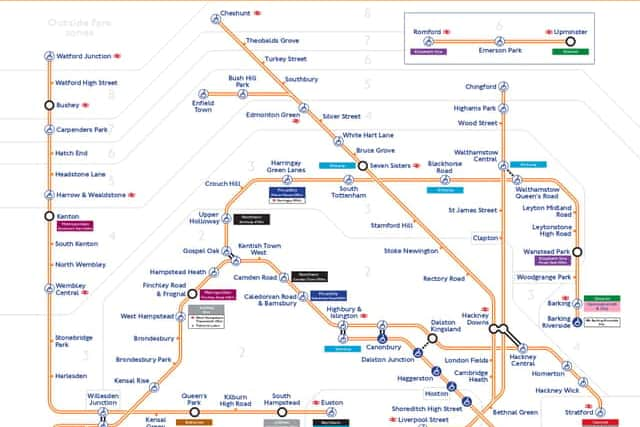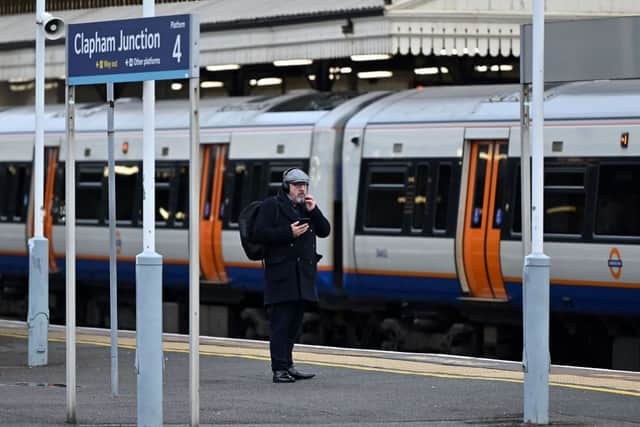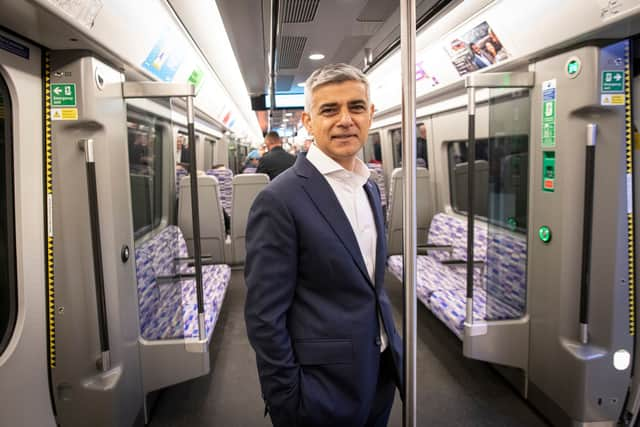London Overground: TfL announces plans to rename all six lines as part of 2023/24 budget
and live on Freeview channel 276
London Overground’s six lines may be in for a long-awaited renaming, with millions set aside in Transport for London’s (TfL) 2023/24 budget for the work.
The transport body’s budget for the forthcoming year, published this month, has outlined its improving financial position following the pandemic.
Advertisement
Hide AdAdvertisement
Hide AdThe organisation noted that it expects to be able to fully cover operational costs, while also investing in services including additional bus routes and tube improvements.
A total of £4 million has been earmarked for renaming the London Overground lines. The allocation is intended to make it easier to navigate the routes, which have a complicated set of interchanges.
Plans to give each line its own name were included in Sadiq Khan’s election manifesto in 2021, as part of his stated aim to better-reflect the diverse history of the capital.
A TfL spokesperson, said: “The mayor’s manifesto set out his intention to explore renaming routes on London Overground, to give each individual route its own name and make the network easier to navigate. Following the pandemic we are able to take this work forward and are currently assessing the options. Money has been set aside in the budget to take this work forward.”
What are the London Overground routes?
The six current London Overground lines are:
Advertisement
Hide AdAdvertisement
Hide Ad- Gospel Oak to Barking Riverside
- Highbury and Islington to New Cross/West Croydon/Crystal Palace/Clapham Junction
- Euston to Watford Junction
- Liverpool Street to Chingford/Enfield Town/Cheshunt
- Romford to Upminster
- Stratford to Richmond/Clapham Junction
The budget does not make clear when work on renaming the London Overground lines will begin, or how it will be carried out. LondonWorld has contacted TfL for clarification.


When was the London Overground launched?
The London Overground took over the lines previously run by Silverlink Metro in 2007, after the franchise was disbanded, with the aim of providing better connections outside of central London.
It has gradually been extended to incorporate all of the six lines currently operated, and today connects a total of 112 stations.
According to TfL, more than 189 million journeys were made on the London Overground in 2016/17.
Advertisement
Hide AdAdvertisement
Hide AdWhat else was in TfL’s budget?
In its 2023/24 budget, TfL detailed how it expects to return to operating financial sustainability in the coming year thanks to a combination of factors including growing passenger demand and more varied sources of income.
With its ridership expected to grow by 7% by the end of 2023/24, bringing in an additional £800 million, and its total income having risen by 14% since 2020/21, the transport body said it will again be able to use its surplus to fund capital investment and rebuild its cash reserves.
TfL announced it will be delivering a range of schemes across the capital, including the rollout of the ULEZ to outer London, introducing the first of 54 new DLR trains, and unveiling the full peak timetable for the Elizabeth Line, due in May 2023.


London mayor Sadiq Khan
Announcing the budget, the mayor of London, Sadiq Khan, said: "We have worked incredibly hard and shown real determination to bounce back financially after an incredibly tough few years for TfL due to the impact of the pandemic.
Advertisement
Hide AdAdvertisement
Hide Ad“Key improvements to the transport network, like the delivery of the transformational Elizabeth Line, have helped ridership climb back up towards pre-pandemic levels, further boosting London’s economy.
“Future improvements, including brand new DLR trains, bus services and updates to the Piccadilly line will make our transport network even better.”


Mr Khan added: "Before the pandemic, prudent financial management had placed TfL on the cusp of breaking even for the first time in its history. Now, after a very difficult few years due to the pandemic, we are set to deliver a surplus for the first time ever.
“However, the hard work is not over and we will work with the government to ensure we get the national investment we need to continue delivering a world-class transport network for our city - something that is so crucial to building a greener, fairer and more prosperous London for everyone.”
Comment Guidelines
National World encourages reader discussion on our stories. User feedback, insights and back-and-forth exchanges add a rich layer of context to reporting. Please review our Community Guidelines before commenting.
